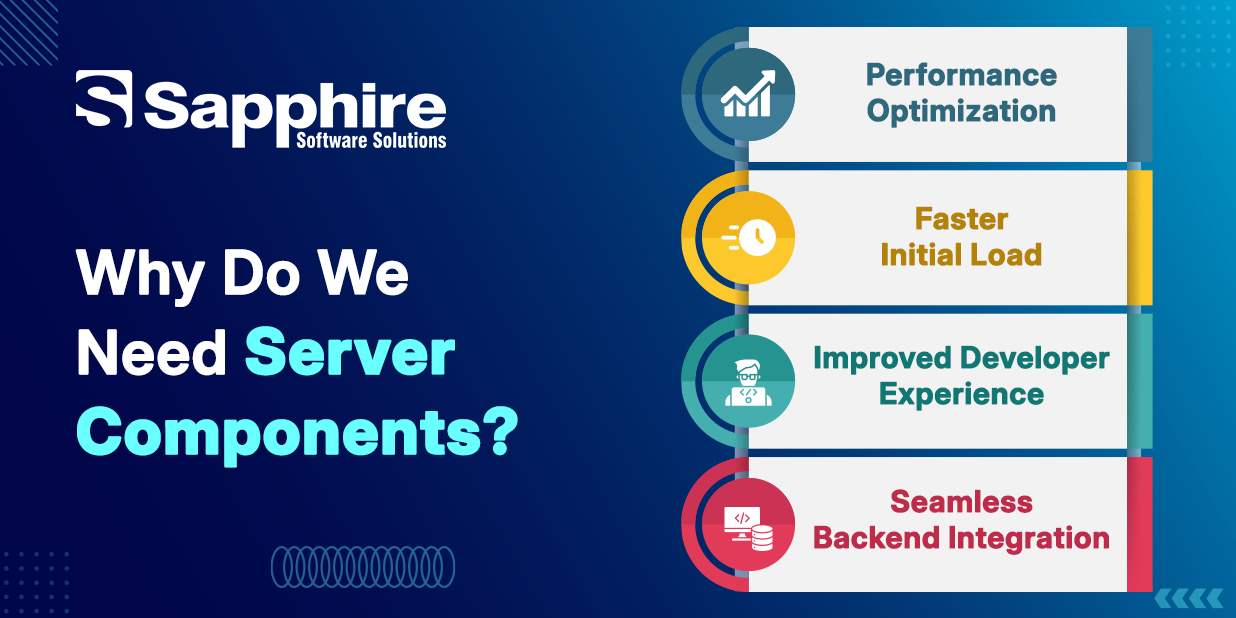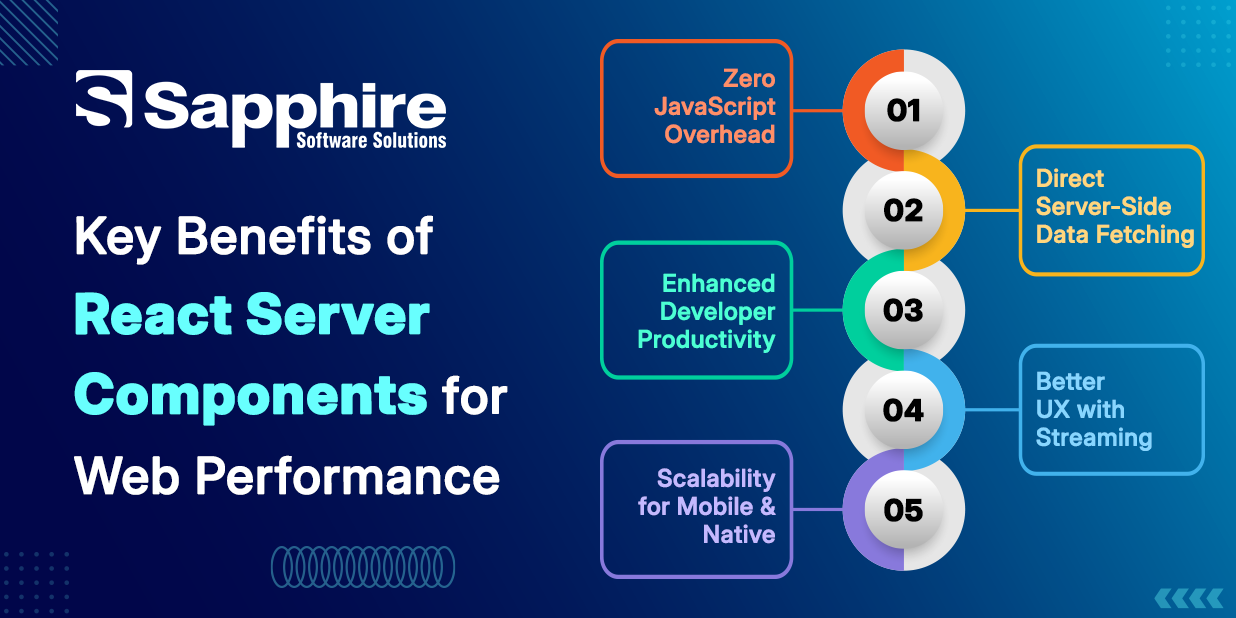What Are React Server Components?
The React team has recently announced a new feature known as React Server Components (RSCs) that offers tremendous benefits to developers. RSCs allow developers to create components that do not run or render strictly on the client, but rather on the server. In short, RSCs allow developers to create components of their UI that do not need client-side interactivity and to render those components server-side, providing only the final HTML to the browser.
RSCs were originally proposed in 2020, and their use of server-based rendering to present data is being adopted from frameworks like Next.js. RSCs are intended to lower JavaScript bundle size and load time, and to simplify the complexities of dealing with data fetching logic. By introducing server-based components and rendering, developers can offload work from the client to the server and create responsive applications that perform better on slow networks and on weaker devices.
When combined with React Server Components in Next.js projects, this paradigm shift in development has the potential to change how we build full-stack applications in React. Most intriguing about React Server Components is that RSCs were built with the idea that they could reside side-by-side with client components, adding the ability to adopt this architecture incrementally.
Why Do We Need Server Components?

The basis of the philosophy we call React Server Components is simple; there is no requirement for interactivity of every element of a UI. Consider the static elements of a header, product descriptions, FAQs, or metadata for SEO purposes. These types of elements do not require JavaScript to execute on the client side; thus, there’s no point in shipping to the client all that code, including JavaScript.
Here’s why RSCs are important:
- Performance Optimization: Utilizing the server for static or read-only rendering can significantly reduce the amount of JavaScript you send to the client.
- Faster Initial Load: Less JavaScript means a lower time to first byte and rendering content faster, especially important for mobile responsiveness.
- Improved Developer Experience: The React Testing Library Server Components enables developers to effectively test server-rendered logic in isolation, simplified and standardized.
- Seamless Backend Integration: The functionality of RSCs allows elements to be fetched from the server environment without unnecessarily layering your APIs (like React Server Components, PHP, Golang, or Node.js APIs) on top of each other.
Increasing mobile-first deliverables has developers looking for integrations between React Server Components, React Native with React Server Components Expo, essentially realizing the benefits of server-side rendering for mobile hybrid apps.
Client vs Server Components: What’s the Difference?
Feature |
Client Components |
Server Components |
| Rendering Location |
|
|
| JavaScript on Client |
|
|
| SEO Benefits |
|
|
| Interactivity |
|
|
| Code Bundle Size |
|
|
| Data Fetching |
|
|
Key Benefits of React Server Components for Web Performance:-

Let us discuss what makes React Server Components revolutionary.
1. Zero JavaScript Overhead:
Since RSCs are never sent to the client, there are zero JavaScript packages for those components when they do not need to. So that means smaller bundles, shorter download times, and faster renders. Users with limited bandwidth or older devices will benefit greatly.
2. Direct Server-Side Data Fetching:
You can talk directly to your backend or database and not deal with client-side APIs. React Server Components server Golang Services, or legacy PHP endpoints, allow us to always transition to an RSC without the overhead of creating redundant API layers.
3. Enhanced Developer Productivity:
Server logic can now live close to UI code, which means we do not need REST or GraphQL to implement every feature. Teams also get up to a standard of code quality with React Testing Library Server Components, without having the additional complexity of mocking front-end environments.
4. Better UX with Streaming:
RSCs leverage React’s streaming rendering features, allowing portions of a page to begin loading as they are ready. This helps improve perceived performance and user engagement.
5. Scalability for Mobile and Native:
For teams using React Native, experimentation with React Server Components and bridges from React Native and Expo is exciting, as they have future potential. Server components would allow different platforms to not replicate code but reuse your logic and optimize delivery per platform.
In short, React.js Server Components do not just help you build faster applications—they help you build smarter applications.
Challenges and Limitations to Keep in Mind:-
1. Learning Curve:
If you’re new to full-stack development or coming purely from a client-side React background, it can take a while to learn the server-client boundary and manage component splitting.
2. Tooling Support Still Growing:
Despite Next.js integrating well, the ecosystem surrounding React Server Components, ESTO, React Native, and Golang backends is still in its infancy. There may be extra integration necessary to get debugging and testing running smoothly.
3. Dependency Compatibility:
Not all npm packages are server-friendly. If a package uses the `window` object or relies on browser APIs such as `local storage`, or it relies on the DOM, you won’t be able to use the package in RSC.
4. Potential SSR Confusion:
RSCs are NOT the same as traditional server-side rendering (SSR). They both render on the server. However, RSCs deliver the component as serialized data streams, not entire HTML pages, which allows for more granular hydration.
Despite these obstacles, companies that adopt this model early, particularly if they leverage an experienced React Native Development Company, will be best positioned to reap the benefits of performance advantages.
Why Choose Sapphire for React Server Components Development?
Properly implementing React Server Components takes serious knowledge and expertise with the internals of React, infrastructure, and performance engineering. At Sapphire Software Solutions, we specialize in modern web practices and have been helping startups and enterprises with their tailored development needs.
Why clients trust us:
- We have successfully built and delivered many production-ready apps using React.js Server Components
- Our full-stack skill level covers nearly all programming languages: Node.js, React Server Components, PHP, Golang, and GraphQL.
- We have connected React Server Components with hybrid mobile apps through React Server Components, React Native, and Expo.
- We have a strong emphasis on testing and CI/CD using React Testing Library Server Components
- We develop UI/UX-first apps that demand to be both fast and smooth
Whether you are migrating from an outdated project to something new or starting from scratch with React Server Components Next.js, we can help make confident architectural decisions, optimize performance, and position yourself to scale long into the future.
Our full-stack developers recognize the trade-offs between server and client-side execution to help create an app with less code. If you are looking for a trusted React Native Development Company to partner with or are looking to partner with a web company that cares about performance, we can help.
Conclusion:
React Server Components are a far-reaching consideration for how we perceive the existence of rendering UIs. By moving static or read-only parts of our application to the server, we can leverage measurable performance improvements while maintaining the interactivity or dynamic performance that React is famous for. With a growing swath of frameworks and backend ecosystems supporting React Server Components, Golang, and PHP, not to mention mobile platforms like React Server Components Expo, our opportunities are expanding rapidly.
The future of web performance is hybrid architecture—a mix of server and client, static and dynamic; a mix of speed and flexibility. React Server Components are more than a new tool—they are a mindset shift. If you are serious about performance, SEO, and scalability, you should consider React Server Components as part of your stack. And when you’re ready to build, Sapphire Software Solutions’ team will be ready to help you take your project from vision to launch.






































